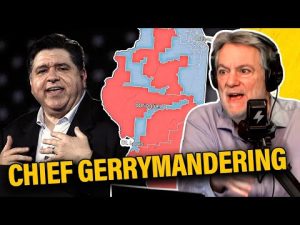In the grand theater of American politics, Governor Gavin Newsom of California is making quite the scene. Recently, he suggested that if Texas goes ahead with its plans for redistricting, he will retaliate by redrawing California’s districts to diminish Republican representation, especially in areas like Orange County. This bold declaration raises more than a few eyebrows. Is it a genuine threat, or simply a maneuver to boost his profile for a potential presidential run?
To understand the implications of Newsom’s remarks, one must first recognize the backdrop of redistricting in America. States like Texas enjoy a relatively straightforward process for redrawing district lines, allowing them to adjust according to population shifts. However, California’s process is bogged down by the need for a constitutional amendment to implement any significant changes in its own political boundaries. This creates a stark contrast between the two states. Newsom may wish to redraw the lines, but the reality is that his hands are tied, making these threats less a declaration of intent and more a cry for attention.
Furthermore, the posturing surrounding redistricting serves to highlight the deep-seated issue of gerrymandering. The state of California, like Illinois, New York, and Massachusetts, has a long history of manipulating district lines to ensure political advantage, largely in favor of the Democrats. It’s worth noting that California has already removed a considerable amount of Republican representation through its previous gerrymandering efforts. How much further can Newsom stretch the limits before he runs out of room?
What Governor Newsom seems to overlook, or perhaps deliberately ignores, is the public’s growing awareness of these tactics. In Texas, the redistricting process has revealed the entrenched nature of gerrymandering in other states, prompting concerns about fair representation. If he continues to make threats without the ability to follow through, he risks appearing disingenuous—a common pitfall for politicians trying to gain favor. There’s a fine line between strategic moves and empty bluster, and it seems that Newsom might be dancing precariously close to the latter.
In conclusion, while Newsom’s threats may serve to ignite debates and rally his base, the practical implications of his statements are questionable at best. Rather than shifting Texas’s approach to redistricting, it’s more likely that his comments will further entrench party lines and raise awareness about gerrymandering’s adverse effects on democracy. In the end, perhaps all this shows is that in the vast world of political posturing, sometimes all it takes is a little drama to remind us that real change requires more than just words and threats. For now, it appears that Newsom may have more questions to answer than points to score as the presidential campaign trail unfolds.







